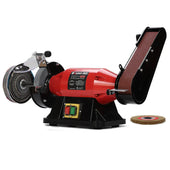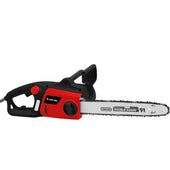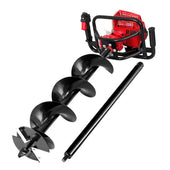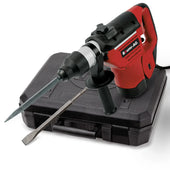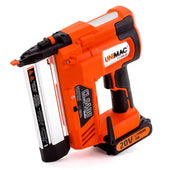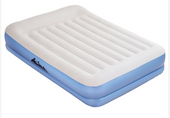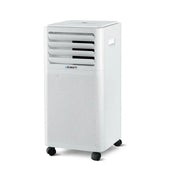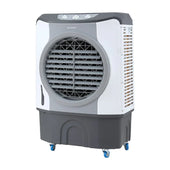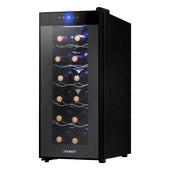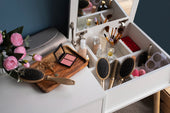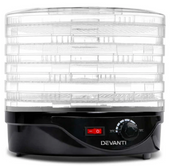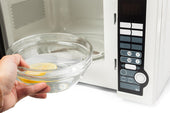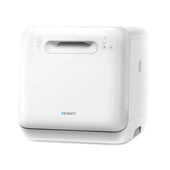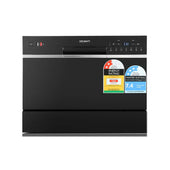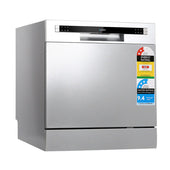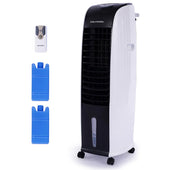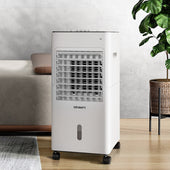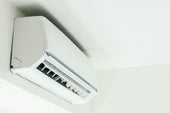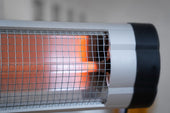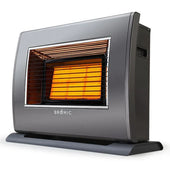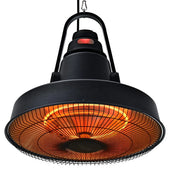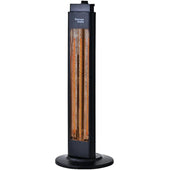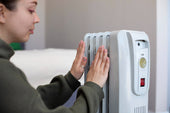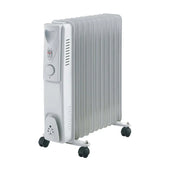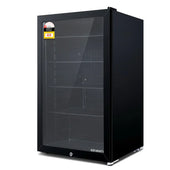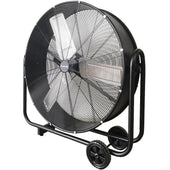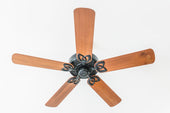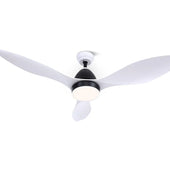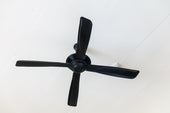Introduction to Ergonomic Kitchen Chairs: What Sets Them Apart?
Ergonomic kitchen chairs are designed to optimise comfort and support while promoting good posture during everyday use. Unlike traditional chairs, they prioritise functionality and physical well-being with features tailored to the user’s needs. These chairs incorporate elements like adjustable seat heights which accommodate different counter or table levels, ensuring the perfect alignment for various tasks. Additionally, contoured seating provides better lumbar support, reducing strain on the lower back during prolonged sitting.
At During Days, Materials used in ergonomic chairs are often chosen for durability and breathability, enhancing comfort and longevity. Features such as swivel mechanisms or armrests further improve usability, making them ideal for multitasking in the kitchen.
Why Ergonomics Matter in Your Kitchen Seating
Proper ergonomics in kitchen seating is crucial for ensuring physical well-being and enhancing the dining or cooking experience. Chairs that lack ergonomic design can lead to poor posture, discomfort, and long-term health issues such as back pain or muscle strain. Kitchen activities, including family meals or working at counters, require seating that supports proper alignment and minimises stress on the body.
Key ergonomic features include:
- Adequate lumbar support to reduce back strain.
- Adjustable height to suit the user and counter height.
- Comfortable seat depth to support the thighs without restricting movement.
Ergonomically designed kitchen chairs harmonise functionality with user comfort, promoting healthier everyday habits.
Key Features to Look for in an Ergonomic Kitchen Chair
When choosing an ergonomic kitchen chair, consider essential features that provide comfort and support during extended use.
- Adjustable Height: Opt for chairs with adjustable height mechanisms to accommodate different counter or table heights. This ensures a natural alignment between the body and the workspace.
- Lumbar Support: Look for chairs offering built-in lumbar support to maintain proper spinal curvature and reduce lower back strain during prolonged seating.
- Cushioning and Seat Design: Prioritise chairs with padded seats and contoured edges to improve comfort and reduce pressure points on the thighs.
- Sturdy Base and Stability: A solid base with anti-slip feet or wheels enhances stability and prevents unnecessary movement.
- Breathable Materials: Favour materials such as mesh or fabric that allow airflow, keeping the user cool in warmer kitchens.
A focus on these features ensures the ergonomic chair meets practical and health needs effectively.
Understanding the Importance of Lumbar Support in Kitchen Chairs
Proper lumbar support is vital for maintaining spinal health during prolonged sitting. Kitchen chairs with adequate support help to preserve the natural curve of the lower back, reducing the risk of strain or discomfort. Good lumbar design ensures even weight distribution, alleviating pressure on vertebrae and surrounding muscles.
Advantages of Lumbar Support:
- Encourages Correct Posture: Supports spinal alignment, preventing slouching.
- Relieves Lower Back Pain: Reduces stress on lumbar discs and nerves.
- Improves Stability: Helps maintain balance while seated.
Transitioning to ergonomic chairs with lumbar features can dramatically enhance comfort, particularly during extended durations of sitting and dining.
The Role of Adjustable Seat Heights for Maximum Customisation
Adjustable seat heights provide an essential feature in ergonomic kitchen chairs, allowing users to tailor the chair to their specific needs. By accommodating various heights and body types, these chairs ensure proper posture and reduce strain on the spine and joints.
Key Benefits of Adjustable Heights:
- Enhanced Comfort: Users can adjust the chair to ensure their feet rest flat on the floor, promoting healthy circulation.
- Optimal Alignment: Correct chair height prevents excessive pressure on thighs or knees and aligns hips ergonomically with the work surface.
- Improved Versatility: Such chairs cater to multiple users, offering flexibility in shared kitchen spaces or multi-functional use.
An adequately adjusted height creates a balanced seating experience, essential for prolonged comfort in daily kitchen tasks.
Materials and Fabrics: Balancing Aesthetics with Comfort
When selecting an ergonomic kitchen chair, the choice of materials and fabrics greatly impacts both functionality and appeal. Natural materials like wood and bamboo lend a warm aesthetic, while also offering durability. On the other hand, metal frames provide a modern, sleek look with excellent structural support. Upholstery options, like leather or faux leather, enhance sophistication but may compromise breathability, especially in warmer climates.
Fabric cushions with breathable textiles, such as cotton or mesh, ensure comfort during prolonged sitting. Chairs with foam padding balance softness and firmness effectively. Additionally, materials treated with stain-resistant finishes simplify maintenance, vital in the kitchen environment. Prioritising these elements ensures an optimal fusion of style and practicality.
Top Design Styles for Ergonomic Kitchen Chairs
Ergonomic kitchen chairs come in various design styles, blending form and function to suit different tastes and needs. Here are some popular options:
- Traditional Designs: These feature classic wood finishes, high backs, and cushioned seats, offering elegance and comfort. Neutral tones harmonise well with timeless kitchen décor.
- Modern Styles: Known for sleek lines, metal accents, and minimalist aesthetics, these chairs provide both ergonomics and contemporary appeal.
- Rustic Charm: Crafted from natural materials like reclaimed wood, these designs add warmth while focusing on posture support.
- Scandinavian Influence: Scandinavian chairs emphasise simplicity with clean lines, lightweight frames, and neutral shades, ensuring functionality aligns with style.
How to Choose the Best Chair for Your Kitchen Layout
Selecting the ideal chair involves considering the compatibility between style, functionality, and the kitchen's layout. Begin by analysing the dimensions of the kitchen space. For compact kitchens, slim-line or stackable chairs maximise functionality while conserving room. Open layouts may accommodate bulkier chairs with armrests for additional comfort.
Prioritise chair height to ensure proper alignment with counters or tables. Standard dining chairs typically suit lower tables, while bar stools or counter-height chairs complement elevated surfaces.
Material is another crucial factor; durable, easy-to-clean surfaces such as leather or metal work best for kitchens prone to spills. Wood or upholstered chairs may offer warmth but require extra maintenance.
Benefits of Investing in Quality Ergonomic Seating
Quality ergonomic chairs are designed to promote good posture, alleviate discomfort, and reduce the likelihood of strain. Investing in such seating provides a range of benefits that enhance daily life, particularly in spaces like the kitchen.
Key Advantages:
- Improved Posture: Ergonomic chairs are engineered to support the spine's natural alignment, helping to reduce slouching and back pain.
- Enhanced Comfort: Adjustable options such as seat height, lumbar support, and backrest angles ensure the chair fits individual needs.
- Increased Productivity: Comfortable seating reduces distractions caused by discomfort, allowing users to focus during kitchen tasks.
- Long-term Health Benefits: Minimising risks associated with poor seating can prevent musculoskeletal issues over time.
- Versatility: Many ergonomic chairs are aesthetically pleasing and blend seamlessly into modern kitchen interiors.
These features combine to create seating that improves both physical health and overall kitchen functionality.
Maintenance Tips to Extend the Lifespan of Your Kitchen Chair
- Regular Cleaning: Wipe down the chair surfaces weekly with a damp, soft cloth. For upholstered chairs, use a vacuum’s upholstery attachment to remove dust and crumbs.
- Protect Against Spills: Use fabric protectors or waterproof seat covers to prevent stains. Blot spills immediately to minimise damage.
- Check for Loose Screws: Tighten screws and bolts regularly to maintain stability and prevent wear caused by wobbly components.
- Avoid Harsh Chemicals: Use mild soap or furniture polish specifically formulated for your chair's material. Harsh cleaners may degrade surfaces over time.
- Temperature and Humidity: Keep chairs away from direct sunlight and high humidity to prevent warping, fading, or cracking. Use coasters or padding to protect wooden frames.
- Inspect for Wear and Tear: Look for signs of damage such as bent frames or split wood. Address these early to avoid further deterioration.
- Use Proper Handling: Lift chairs when moving them instead of dragging, especially on uneven surfaces, to prevent structural damage.
Top-Rated Ergonomic Kitchen Chairs: A Product Comparison Guide
Choosing the perfect ergonomic kitchen chair requires understanding key factors like comfort, adjustability, and durability. Below is a comparison of some top-rated models:
- Herman Miller Setu Chair Lightweight and flexible, this chair offers great back support with its Kinematic Spine design. Its minimalist style matches contemporary kitchens beautifully.
- Varier Active Balans Chair Known for promoting active sitting, this chair features a kneeling design to improve posture and core strength. Ideal for compact kitchen spaces.
- Steelcase Series 1 A highly adjustable option, it includes lumbar support and a soft cushioned seat. Its sleek design makes it versatile for any aesthetic.
Each model caters to specific needs, offering a blend of style and function for modern kitchens.
Budget-Friendly Options for Ergonomic Seating
Finding ergonomic kitchen chairs that balance comfort and affordability is achievable with careful consideration. Many brands offer budget-friendly options without compromising functionality or support.
- Adjustable Stools: Adjustable stools with lumbar support can be an economical choice. Look for pneumatic height adjustment and padded seating.
- Mesh-Back Chairs: Chairs with breathable mesh backs provide comfort at a fraction of the cost. These can help reduce heat build-up during extended sitting.
- DIY Cushioning: Enhancing existing chairs with ergonomic seat cushions and backrests can be an inexpensive alternative.
- Minimalist Designs: Simpler designs often reduce cost. Consider chairs with essential ergonomic features like a curved backrest.
Users should also explore thrift stores or clearance sales for quality items at reduced prices.
Considering Health Impacts: Posture and Long-Term Benefits
An ergonomic kitchen chair not only enhances comfort but also supports spinal health. Poor posture while sitting can lead to chronic back pain, spinal misalignment, and even reduced lung function over time. Ergonomic designs aim to combat these issues by promoting proper posture through adjustable seat heights, lumbar support, and appropriately angled backrests.
Good posture ensures even weight distribution, reducing pressure on joints and muscles. This can prevent degenerative conditions like arthritis. Chairs with built-in footrests or swivel functions also help users maintain natural movements while seated. Investing in ergonomic seating prioritises long-term musculoskeletal health and boosts overall well-being.
Where to Buy: Finding Reliable Retailers for Ergonomic Kitchen Furniture
To purchase ergonomic kitchen chairs, consider both online and offline options. Shopping online offers an extensive variety, with platforms like:
- Amazon: A hub for diverse brands, reviews, and prices.
- Wayfair: Specialises in a mix of budget-friendly and premium options.
- IKEA: Renowned for affordable, functional designs.
For in-person purchases, look for furniture stores such as:
- John Lewis: Known for quality products and expert advice.
- DFS: Offers try-before-you-buy policies.
- Independent Boutiques: Great for unique or custom solutions.
Always read customer reviews, check warranties, and inspect for ergonomic certifications to ensure reliability.
Conclusion: Making the Right Choice for Your Comfort and Health
Selecting the ideal ergonomic kitchen chair requires careful consideration of features that prioritise posture, support, and durability. The chair's adjustability, including height and lumbar support, ensures it caters to diverse body shapes and sizes. Materials should be easy to clean while providing long-lasting comfort.
For individuals who spend extended periods in the kitchen, chairs with advanced features like swivel capabilities or padded seating further elevate usability. Combining functionality with aesthetic compatibility ensures the chair integrates seamlessly with existing kitchen decor. Ultimately, investing in a well-designed ergonomic chair promotes both physical well-being and a harmonious environment.



